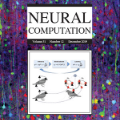Many daily activities and psychophysical experiments involve keeping multiple items in working memory. When items take continuous values (e.g., orientation, contrast, length, loudness) they must be stored in a continuous structure of appropriate dimensions. We investigate how this structure is represented in neural circuits by training recurrent networks to report two previously shown stimulus orientations. We find the activity manifold for the two orientations resembles a Clifford torus. Although a Clifford and standard torus (the surface of a donut) are topologically equivalent, they have important functional differences. A Clifford torus treats the two orientations equally and keeps them in orthogonal subspaces, as demanded by the task, whereas a standard torus does not. We find and characterize the connectivity patterns that support the Clifford torus. Moreover, in addition to attractors that store information via persistent activity, our networks also use a dynamic code where units change their tuning to prevent new sensory input from overwriting the previously stored one. We argue that such dynamic codes are generally required whenever multiple inputs enter a memory system via shared connections. Finally, we apply our framework to a human psychophysics experiment in which subjects reported two remembered orientations. By varying the training conditions of the RNNs, we test and support the hypothesis that human behavior is a product of both neural noise and reliance on the more stable and behaviorally relevant memory of the ordinal relationship between the two orientations. This suggests that suitable inductive biases in RNNs are important for uncovering how the human brain implements working memory. Together, these results offer an understanding of the neural computations underlying a class of visual decoding tasks, bridging the scales from human behavior to synaptic connectivity.
翻译:许多日常活动和心理物理实验都涉及将多个项目保存在工作记忆中。 当物品需要连续的值( 如方向、对比度、长度、声度) 时, 它们必须存储在连续的、 具有适当维度的结构中。 我们通过训练经常性网络来调查这种结构在神经电路中的体现方式, 以报告两个先前显示的刺激方向。 我们发现两种方向的活动的多重性类似于悬浮图象。 虽然一个顶尖和标准托鲁斯( 甜甜甜圈表面) 在表面上是等效的, 但它们有着重要的功能上的差异。 当两个方向( 如方向、 对比、 长度、 声调) 需要连续的值时, 需要按任务的要求, 将两者同等地对待, 并将它们保存在连续的直径直线下, 而一个标准的神经电路电路路路路路线线线线结构如何代表着一个稳定的连接度, 我们用这个框架来测试一个稳定的人类历史物理模型 。
相关内容
Source: Apple - iOS 8





